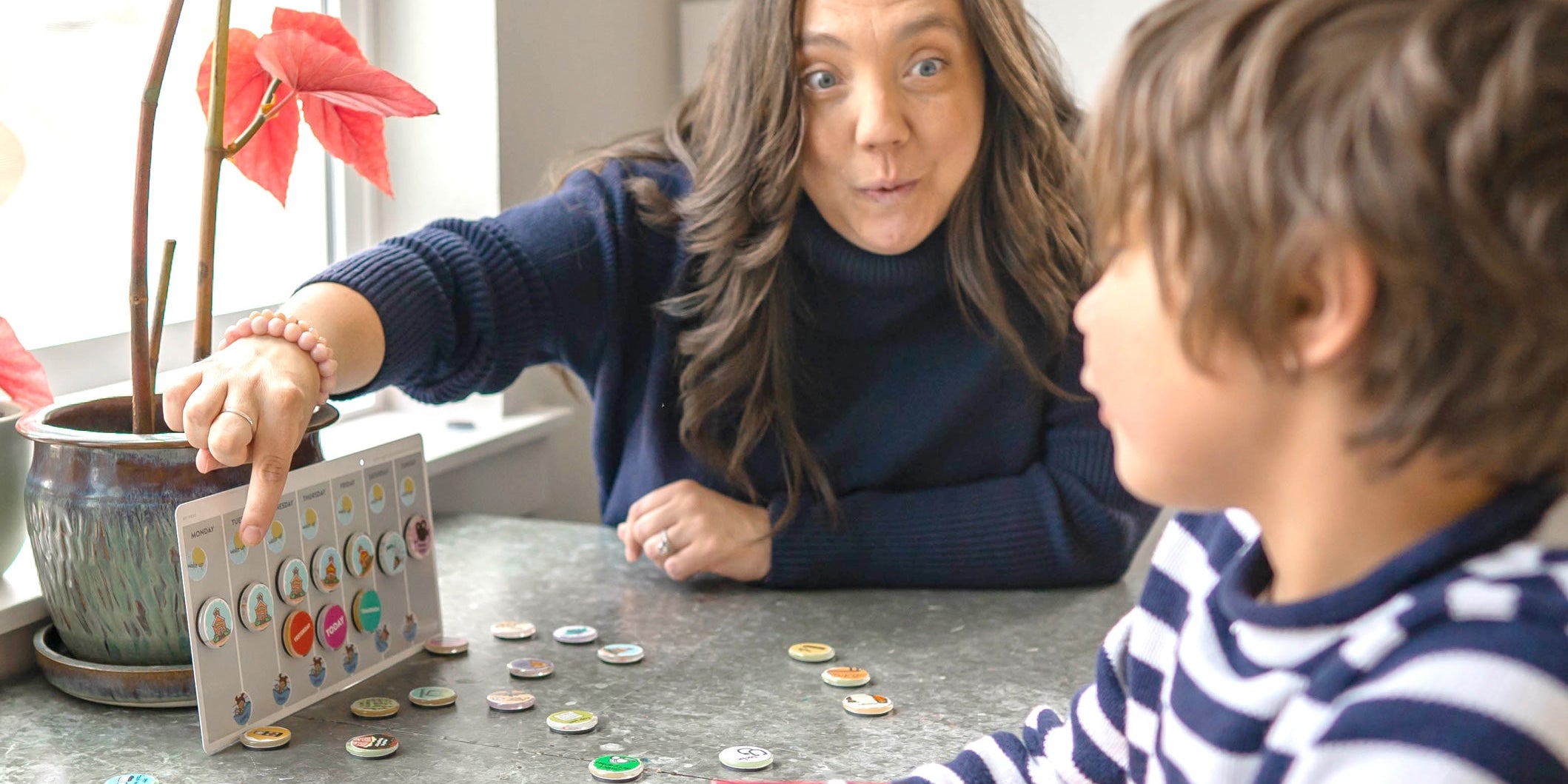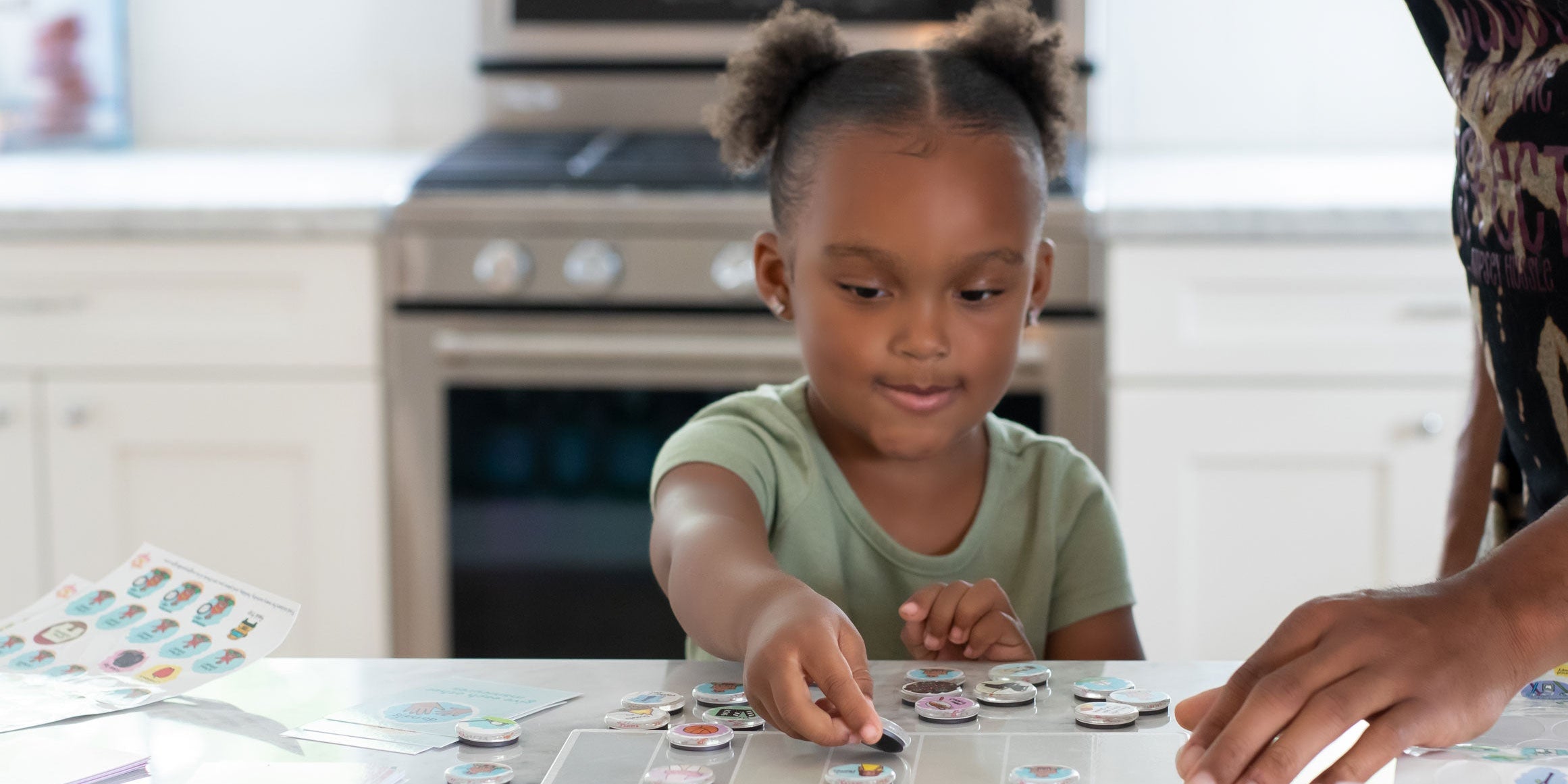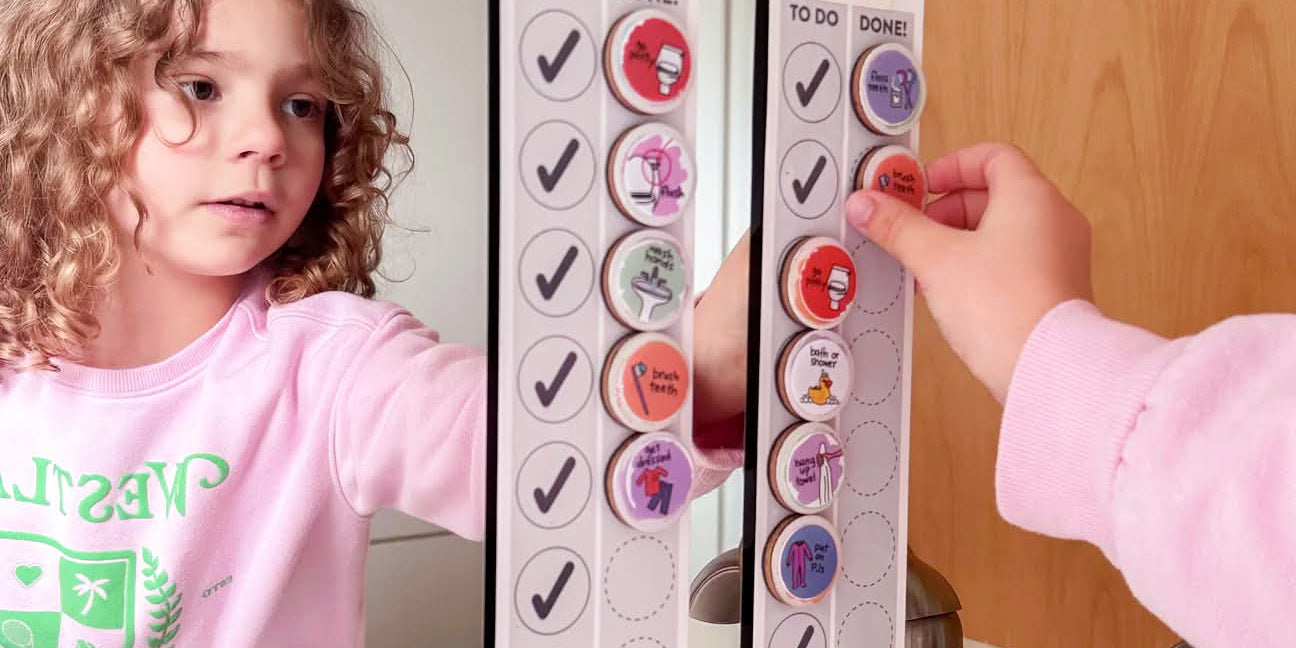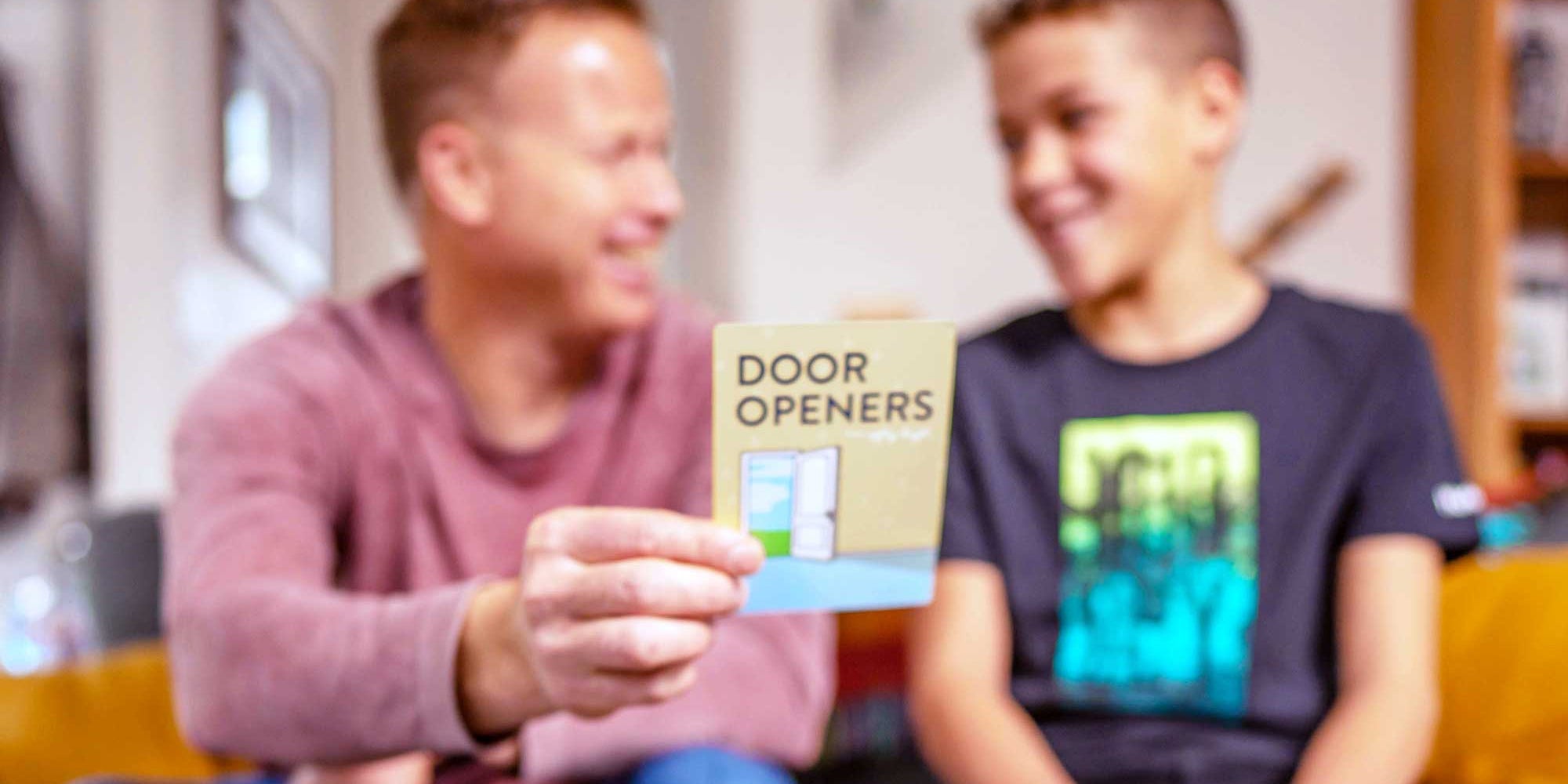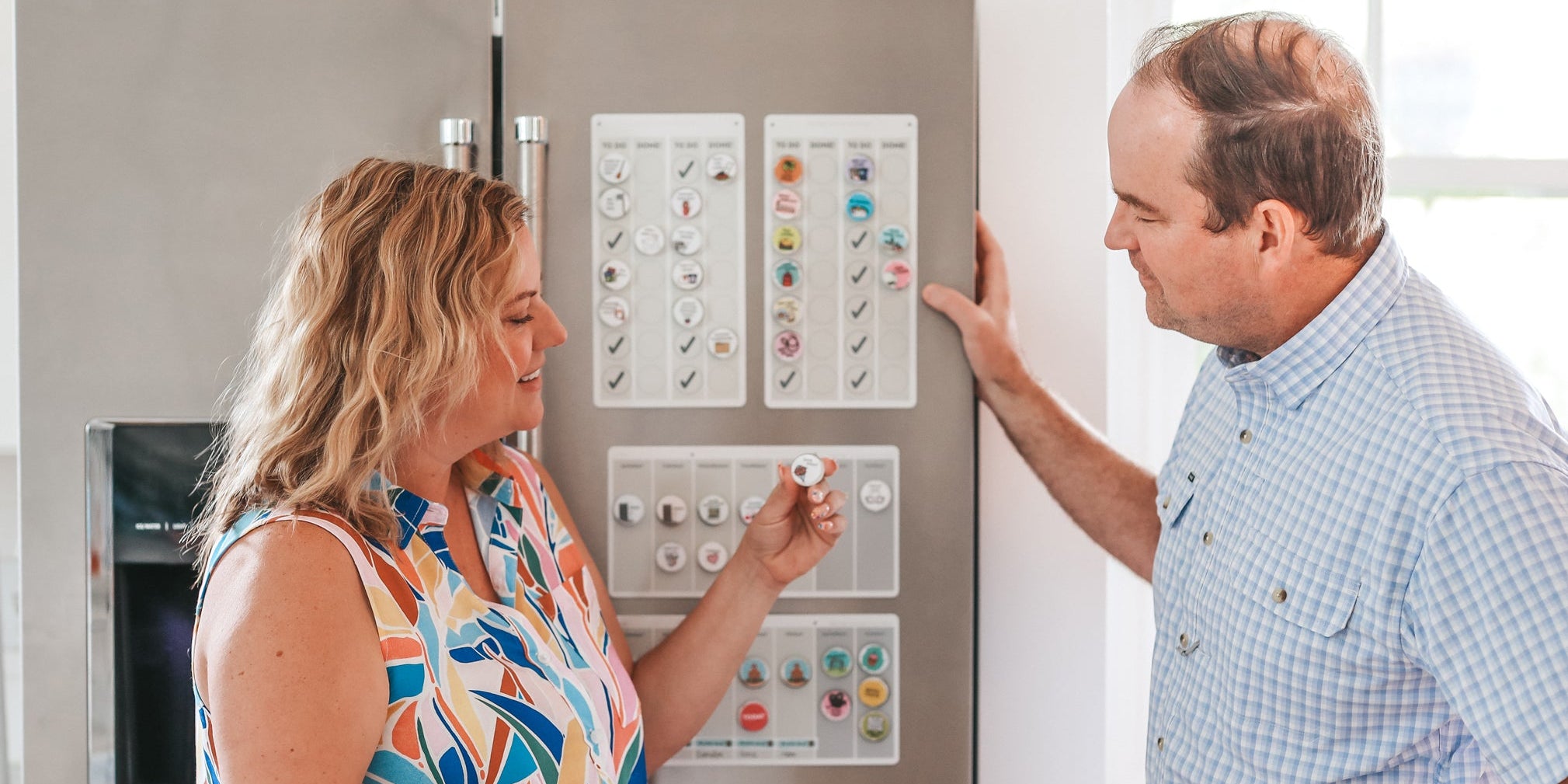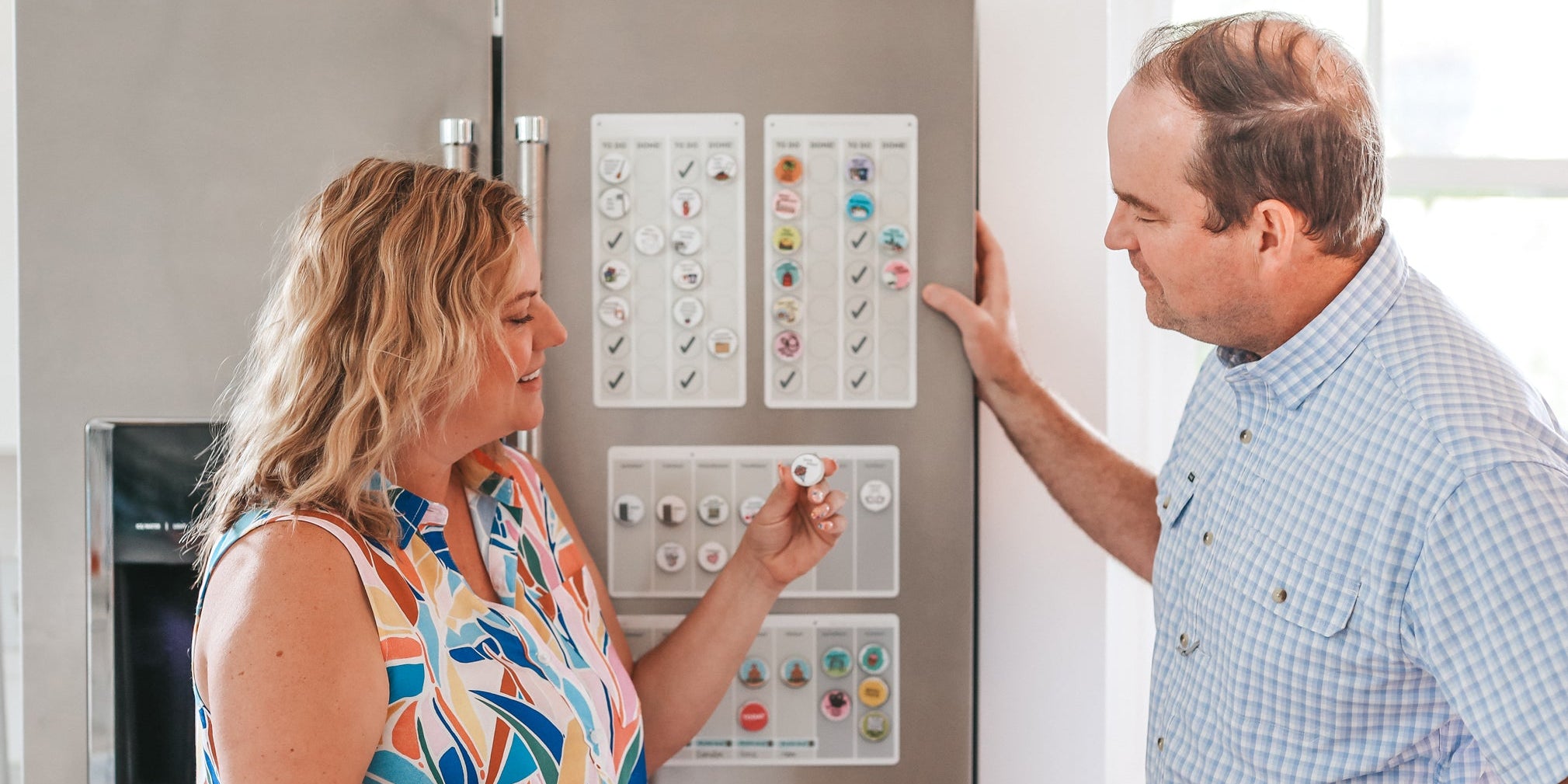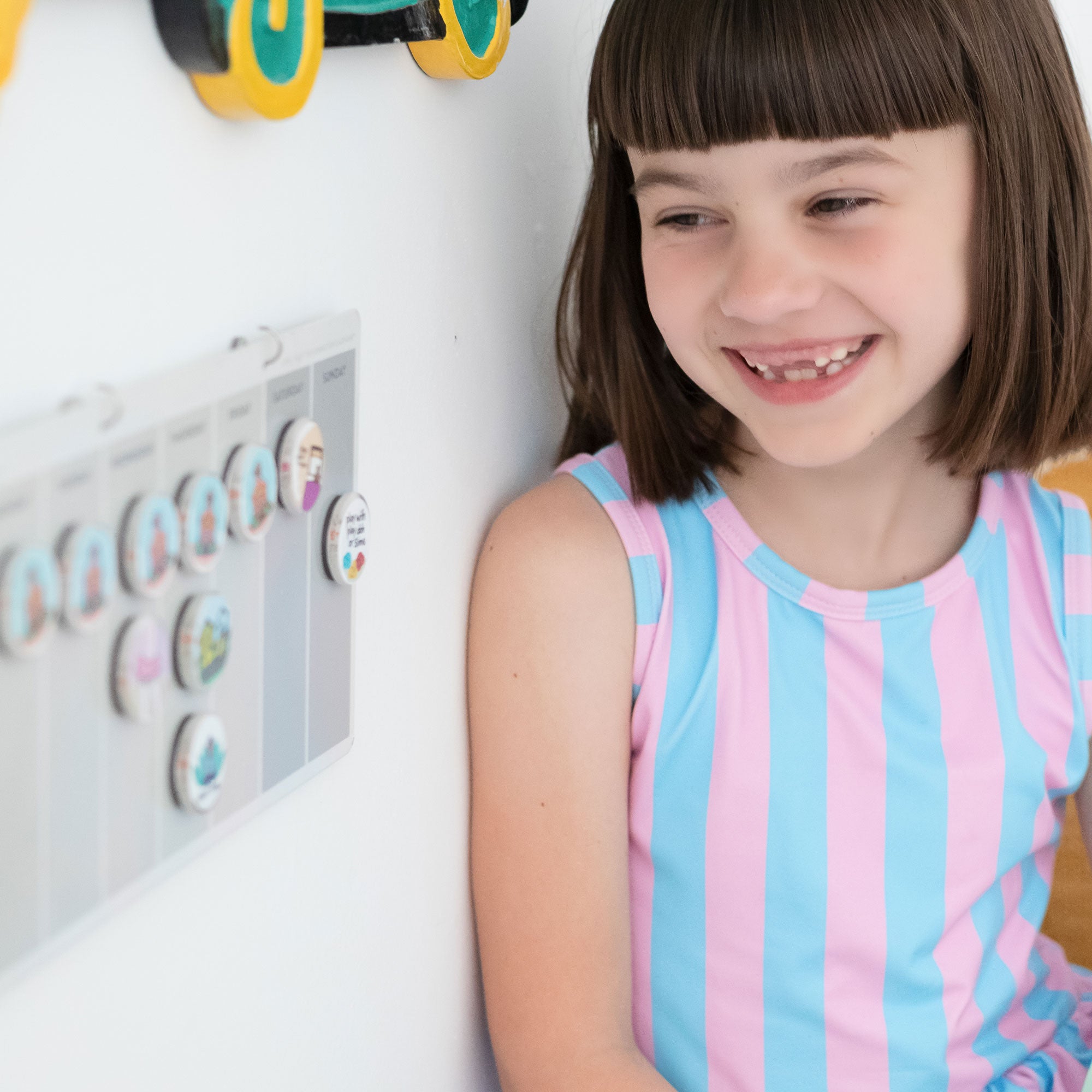The Best Visual Schedule for Kids
A couple of weeks ago, my almost-twelve year-old daughter served me a giant slice of humble pie.
We moved to Oregon from California earlier this year to be closer to my parents, and she's done an epic job adjusting. However I noticed her anxiety was getting higher when summer arrived.
We sat down to talk about it, and imagine my surprise when she said, "your whole business is about showing kids what to expect, and I have no idea what's going on every day!
See, we weren't using our magnetic calendar. She wanted something "aesthetic" (this is tween talk for "pretty") so I'd hung up a monthly calendar and stopped using her own personal calendar, which we used for almost a decade of her life.
We got back into using the Connection Calendar, with a few adjustments for her age: we stopped using most of the magnets (we use stickers for holidays) and just use the wet erase pen, which she writes in herself.
1. Get Your Kid Their Own Calendar
Here's the thing: Kids need their own calendar (and I knew it, but I forgot —even as the founder of Mighty + Bright):
- A personal calendar provides kids a sense of ownership. This is theirs. The things that affect them.
- Knowing what to expect in their own lives provides a healthy feeling of power and control, which means they aren't grasping for power in unpleasant ways.
- "Knowing" you're safe and actually feeling safe are two different things. A visual calendar helps kids feel safe.
A calendar helps kids understand which days are school days and which days are the weekend. Use different stickers for different after school activities and appointments, so they always know what's next.
2. Get Started on the School Routine Ahead of Time
Routines can get a little wonky during the summer (which is its own issue!) and the change back to school routines can be tough.
Planning ahead a bit means you're not actually late in the morning while the kids get readjusted. I've written another article about how to get your kids on board with a back to school routine here. Giving them a sense of control is key, friends.
Start your bedtime routine two weeks before the school starts. This will help kids stick to a regular sleeping routine and get them used to what might be an earlier bedtime.
3. Keep an Open Line of Communication
A new school year brings a whole host of new feelings and new experiences. Preparing your kids for change can be hard. Try a picture book to prepare younger kids for feelings of overwhelm.
And for elementary-aged kids, it's never too late to teach them the skills kids need to cope with all sorts of change.
There's no shame in falling off the wagon, friends. It happens to all of us. Even someone who sells calendars.
There's no better time than now to implement a personal calendar. Transitions aren't easy, and a change in routines is coming with Back to School.
Get your kid their very own calendar and start a Sunday routine of planning the week together. You'll be amazed by how much it helps.







